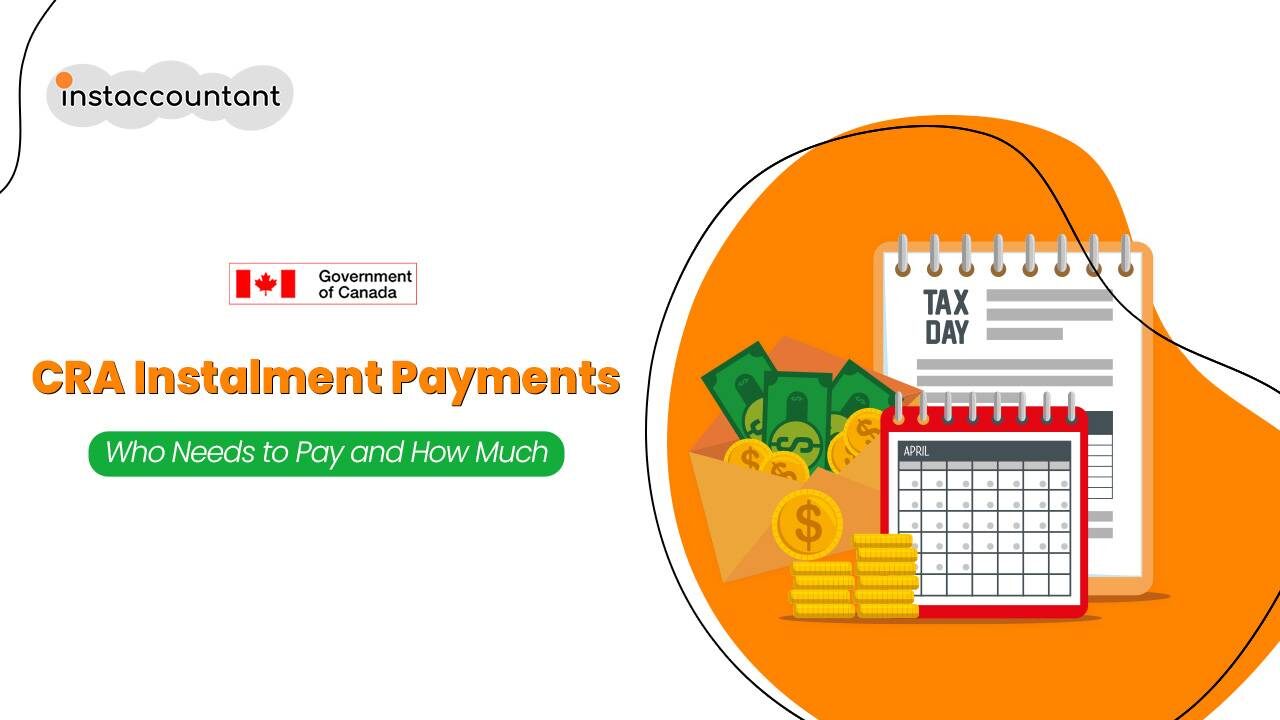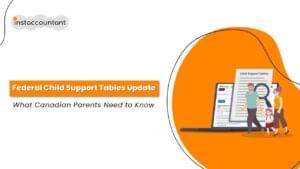The Canada Revenue Agency (CRA) ensures the smooth operation of the tax system. Part of this process involves collecting taxes throughout the year, rather than just a lump sum at tax time. Tax instalments are prepayments for your income tax. Typically, when you work as an employee, taxes are automatically deducted from your paycheck throughout the year. However, if you have income sources where tax isn’t withheld at the source, such as self-employed individuals or those with investment income, the CRA may require instalment payments. This blog unpacks the concept of CRA instalments, providing clarity for those who may be unfamiliar with this aspect of the Canadian tax system.
What are CRA Instalments
CRA instalments are periodic tax payments made throughout the year by individuals who have income sources with little or no tax withheld at the source. Much like how a mortgage is paid in periodic instalments, CRA instalments enable individuals with income not subject to regular tax withholdings such as earnings from self-employment, property rentals, investments, or certain pensions to make incremental payments across the year. This approach not only eases the burden of a substantial end-of-year tax payment but also aligns with the natural flow of income generation for many taxpayers. It’s a proactive measure to prevent the surprise of a significant tax debt at the year’s end.
Instalment payments are typically due on the 15th of March, June, September, and December, and adhering to these dates is crucial to avoid interest and penalties. If any of these dates fall on a weekend or a public holiday, the payment is considered on time if it is received on the next business day.
Who Needs to Pay Instalments
If you earn income that doesn’t have tax withheld at the source, or if the withheld amount is insufficient, you may be required to pay CRA instalments. Here are some common scenarios where instalments may be necessary:
- Self-Employment Income: Self-employment income is not subject to regular tax withholdings, so it is your responsibility to ensure that you meet your tax obligations by making instalment payments throughout the year.
- Rental Income: Rental income is considered self-employment income, and as such, you are responsible for calculating and paying the appropriate taxes on your rental income.
- Investment Income: Investment income such as interest, dividends, or capital gains is typically not subject to regular tax withholdings, so it is important to assess your tax liability and make the necessary instalment payments.
- Pension Payments (in certain situations): This typically applies if your pension income is not subject to regular tax withholdings and your net tax owing exceeds the threshold set by the CRA.
Generally, if your net tax owing for the previous year exceeded $3,000 (or $1,800 for Quebec residents) and you anticipate a similar situation for the current year, you’ll likely be required to pay instalments.
How to Calculate CRA Instalments
Calculating the correct amount for CRA instalments can be challenging. The CRA provides several options to determine the amount, including the no-calculation option, prior-year option, and current-year option.
-
No-Calculation Option: This is the simplest option, best suited if your income and tax situation remains relatively consistent from year to year. The CRA bases your instalments on the net tax you paid in the second preceding year.
-
Prior-Year Option: This option might be suitable if your income for the current year (2024) will be similar to the previous year (2023), but significantly different from the year before (2022). The CRA calculates your instalments based on your net tax from the previous year (2023).
-
Current-Year Option: This method offers the most accurate calculation, but requires estimating your current year’s (2024) income and tax situation. Choose this option if you anticipate significant changes in income compared to previous years.
The option you choose will depend on your income and tax situation. It is recommended to consult with a tax professional or use the CRA’s online instalment calculator to ensure accurate calculations.
How Do You Know If You Need to Pay
The CRA will notify you if you are required to make instalment payments. They will send you an instalment reminder, which will outline the due dates and amounts to be paid. It is important to review these reminders carefully and take the necessary steps to meet your obligations. There are typically two reminders issued per year:
- February Reminder: This reminder covers the upcoming March and June instalment payments.
- August Reminder: This reminder details the September and December instalment payments.
When you receive an instalment reminder from the CRA, it is important to review the information provided. Pay attention to the due dates, payment amounts, and any specific instructions or guidelines mentioned in the reminder.
Consequences of Non-Payment or Late Payment
While not ideal, if you received an instalment reminder but your net tax owing for the year ends up being $3,000 or less (or $1,800 or less for Quebec residents), you won’t be penalized for not making instalment payments. However, if you were required to pay instalments and fail to do so, you may be subject to interest charges and penalties. The CRA takes non-compliance seriously, and the charges can accumulate over time, significantly increasing your tax liability. It is crucial to meet your instalment obligations to avoid these consequences.
How to Make CRA Instalment Payments
The CRA offers convenient options for making instalment payments:
- Pre-authorized debit: You can set up pre-authorized debit payments through your financial institution, allowing the CRA to withdraw the payment directly from your bank account.
- Online banking: Most major banks offer online banking options that allow you to make CRA instalment payments electronically.
- Mail-in payments: If you prefer to send a physical cheque, you can mail it to the address provided on the CRA website. Ensure that you include the necessary payment details and allow sufficient time for the payment to reach the CRA.
Remember: The CRA doesn’t typically send physical receipts for instalment payments. It’s crucial to keep a copy of your payment confirmation (online banking record, cheque stub) or reference number until you verify the transaction on your MyAccount or receive your instalment payment summary in February. This helps ensure documentation in case of any discrepancies.
What Happens at Tax Time
The total amount you pay in CRA instalments throughout the year is credited towards your final tax return. This means that the amount you’ve already paid in instalments is deducted from your total tax owing. If your total instalment payments exceed your actual tax liability, you may be eligible for a refund from the CRA. This typically occurs when you have overpaid your taxes through instalments. The excess amount will be refunded to you after your tax return is assessed and processed. It is important to accurately report your income and deductions to ensure that you receive the correct refund amount.
If you believe that you have overpaid your taxes through instalments and would like to receive a refund before filing your tax return, you can request an advance refund from the CRA. This can be done by contacting the CRA directly or using their online services.
Minimizing Instalment Payments
While certain income sources like self-employment and investment income typically don’t have tax withheld, there might be options for other income streams. For example, individuals receiving pensions, Canada Pension Plan (CPP), and Old Age Security (OAS) benefits have the option to request additional tax withholding at the source. This can prevent the need for significant lump-sum payments at tax time. Additionally, making voluntary quarterly tax payments can also help manage cash flow throughout the year and avoid any potential underpayment penalties.
Conclusion
Understanding who needs to pay CRA instalments is crucial for Canadian taxpayers. By familiarizing yourself with the common scenarios where instalments are necessary and reviewing your specific circumstances, you can ensure that you meet your tax obligations and avoid potential penalties. It is always recommended to consult with a tax professional or refer to the CRA’s official resources for personalized advice and guidance.




